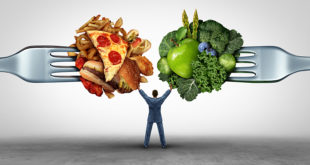Read the article and take the quiz (at the bottom):
1) Know change is possible:
Are you starting your new exercise program tomorrow along with your new diet, eating more vegetables and getting more rest? Me too! The only problem is tomorrow never comes and then, it never stays. The reality is that many of us intend to change but find we seldom do. In this lesson we encourage you to believe that you can change, and we’ll give you some suggestions to assist you in the process. (to realize your dream)
2) Know the physiology of change:
Most often, try as we might, our habits control us, rather than our controlling them. However, under the surface, there is a little known neurological process that is dictating our behavior. An oft repeated behavior, choice, or thought not only becomes a habit, but also creates a neurological pathway in the brain that is deepened with each repetition, making it easier and easier to repeat. A new habit cannot replace the old pathway, however by constant repetition the new habit can be made stronger than the old one.
New habit formation, or change, is much like any other new activity. The more you do it, the deeper the pathway; the deeper the pathway, the easier the change. It is said that, “if you can do something for 30 days, you can do it forever.” Thirty days, is usually quite doable, once the will is engaged.
3) Be able to identify important change factors:
There are several important factors involved in personal change, self-efficacy probably being the most important. A person with self-efficacy believes that they are capable of changing and sees the benefits of changing as an incentive. Naturally, a positive attitude, social and family support, internal (i.e., I will feel better) or external (i.e., I will look better) incentives and environmental support (i.e., access to bike paths, gyms, etc.) are significant factors for personal change. You will find it easier to make and sustain change if you incorporate these factors into your thinking.
4) Distinguish between lapse and relapse:
The change process is always an uphill exercise and will from time to time be neglected for a day or two. However this lapse is not a relapse into an old habit until it extends over several days. Knowing relapse factors ahead of time is important in preventing one. Negative emotional or physiological events, stress, social pressure, limited motivation or coping skills, interpersonal conflicts or high-risk situations tend to increase the risks for lapses. Be prepared to recognize and overcome these challenges, not allowing them to sabotage your success.
5) How to make the change:
Every change must begin with a conscious decision and commitment to it.
Tackle only one change at a time. Remember, every choice, no matter how small, enhances or sets back your change. Plan the necessary activity(s) or steps to accomplish the desired change. Set small doable goals, with measurable results. Try to beat your stated goal. Give yourself a timeline for accomplishing your goals. Constantly review the benefits of the desired change. Redo your goals if necessary until they are doable and consistent. Whenever possible, engage a partner for better accountability. If time permits, journal your daily progress. Because frequently repeated thoughts and choices also become habits, it might be helpful to mentally rehearse your plan of action and the benefits regularly for two or three weeks before you take action in order to facilitate your decision to change.
Ready, set, go! You are now ready for change
Test Your Knowledge
Take the Quiz: How to Change
This short quiz tests your knowledge on: How to Change. Follow the directions for each question. When completed, insert your email address and you will instantly receive your graded response.
 Answers for Me Support & encouragement for every-day life
Answers for Me Support & encouragement for every-day life




